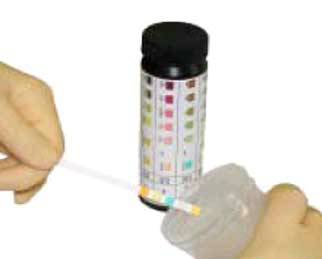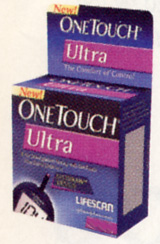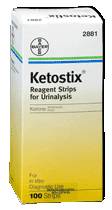Home » Home Health Care Products & Supplies » Keep Your Diabetic Test Strips Close-They May Save Your Life! » Keep Your Diabetic Test Strips Close-They May Save Your Life!
Keep Your Diabetic Test Strips Close-They May Save Your Life!

Urine Reagent Test Strips for Blood
Retail Price: $132.30
Your Price: $103.29
 Unit: 12/case
Unit: 12/case

OneTouch Ultra FastDraw Test Strips
Retail Price: $300.57
Your Price: $260.71
 Unit: 100/box
Unit: 100/box
For every diabetic who must monitor their blood glucose levels with a blood glucose meter, having a ready supply of test strips is critical. It’s absolutely vital to correctly use diabetes test strips to test your blood glucose/blood sugar accurately. It’s the only way to manage your blood glucose levels. Keeping track of your blood glucose will help you feel better and lower the risk of kidney disease, blindness, and nerve damage. Although blood glucose monitors are simple to operate, and using blood glucose test strips are easy to use, many things can go wrong. For accurate test results when using your blood sugar test strips, please abide by the following instructions:
- Read the test strip package to make sure the glucometer test strips will work with your meter.
- Do not use test strips that have passed their expiration date.
- Do not use test strips from a cracked or damaged bottle.
- Read and save all instructions for your meter and test strips.
- Watch and practice with an experienced blood glucose meter user, a diabetes educator, or a healthcare professional.
- Thoroughly wash your hands. Even small amounts of food or sugar on your hands can affect the results.
- Place the strip into the machine and pay attention for the indicator to tell you when to place the blood on the strip.
- Pierce your finger and obtain a drop of blood. The type of drop is dependent on the type of strip you are using (i.e., "hanging drop"
- versus small drop for strips that draw blood into the strip—capillary action).
- Let the blood flow freely from your fingertip – do not squeeze your finger as that may affect results.
- Place the drop of blood on or at the side of the strip.
- Use the correct blood drop size. If there is not enough blood on the strip, the meter may not read the blood glucose level accurately.
- Repeat the test if you have any doubts.
- Use a whole strip each time you use the meter.
- Insert the strip into the meter until you feel it stop against the end of the meter guide.
- Read results at end of the test time and respond as needed.
- Record results or refer to results in the memory of your meter at least one to two times a week.
Take your meter with you when you visit your doctor so a comparison can be drawn against your laboratory results. If you’re having any problems with your meter, bring this up with your doctor and call the manufacturer.















